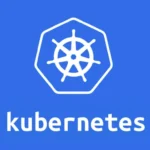1. What is Jenkins?
Jenkins is an open-source automation server used for continuous integration and continuous delivery (CI/CD). It automates the building, testing, and deployment of applications, making it easier to manage the software development lifecycle and accelerate the release process.
2. What are the key features of Jenkins?
- Extensibility: Jenkins can be extended through plugins to integrate with different tools and technologies.
- Easy Installation: Jenkins can run on various platforms like Windows, macOS, and Linux.
- Distributed Builds: Jenkins can distribute the workload to multiple machines, allowing for parallel processing.
- Pipeline Support: Jenkins supports creating pipelines to automate the build, test, and deployment processes.
- Integration with Version Control: Jenkins integrates easily with Git, Subversion, and other version control systems.
3. What is the difference between Jenkins and Hudson?
Hudson was the original name of the Jenkins project. The Jenkins project was forked from Hudson after a dispute between Oracle and the community over control of the project. Jenkins is now the more widely used and actively maintained version.
4. What is a Jenkins Pipeline?
A Jenkins Pipeline is a suite of plugins that supports implementing continuous integration and continuous delivery (CI/CD) workflows into Jenkins. A pipeline defines the entire process of building, testing, and deploying software from source to production.
5. What are the two types of Jenkins Pipelines?
- Declarative Pipeline: Uses a simplified, more structured syntax for defining pipelines in a
Jenkinsfile. - Scripted Pipeline: A more flexible and less structured pipeline defined using Groovy scripting.
6. What is a Jenkinsfile?
A Jenkinsfile is a text file that contains the definition of a Jenkins Pipeline. It is typically stored in the root directory of the repository and defines the entire CI/CD pipeline, including build, test, and deploy steps.
7. What is a Jenkins Node?
A Jenkins Node is a machine that is part of the Jenkins environment. The main Jenkins server is called the Master node, and any additional machines that are used to run builds or tests are called Slave or Agent nodes. Nodes allow Jenkins to distribute workloads and run builds in parallel.
8. What are Jenkins Plugins?
Jenkins Plugins are extensions that add functionality to Jenkins. They can be used to integrate with version control systems, deployment platforms, testing tools, and other third-party services. Popular Jenkins plugins include the Git plugin, Docker plugin, and the Kubernetes plugin.
9. What is the role of the Jenkins Master?
The Jenkins Master is responsible for managing the overall Jenkins environment. It handles scheduling builds, distributing tasks to agent nodes, managing jobs, and monitoring the status of the Jenkins system.
10. What is the role of Jenkins Agents/Slaves?
Jenkins Agents (previously called Slaves) are machines configured to perform the tasks assigned by the Jenkins Master. These agents allow Jenkins to distribute build processes to different machines to scale and run builds in parallel.
11. What is Continuous Integration (CI)?
Continuous Integration (CI) is the practice of automatically integrating code changes into a shared repository multiple times a day. Jenkins automates the process of building, testing, and integrating code changes to ensure that new changes don’t break the existing system.
12. What is Continuous Delivery (CD)?
Continuous Delivery (CD) is the practice of automatically deploying the application to production (or staging) after it passes all the stages of the pipeline, such as build, test, and deploy.
13. What are some common Jenkins Plugins?
- Git Plugin: Integrates Jenkins with Git repositories.
- Pipeline Plugin: Enables support for Jenkins Pipelines.
- Docker Plugin: Integrates Jenkins with Docker for building and deploying containers.
- JUnit Plugin: Provides test result reporting from JUnit tests.
- Maven Plugin: Integrates Jenkins with Maven to automate builds.
14. What is the difference between “Build” and “Deploy” in Jenkins?
- Build: Refers to the process of compiling the source code and generating executable artifacts, such as a JAR, WAR, or binary file.
- Deploy: Refers to pushing the generated artifacts to a target environment (e.g., staging, production) for further testing or usage.
15. What is the Jenkins Blue Ocean?
Jenkins Blue Ocean is a modern user interface (UI) for Jenkins designed to provide a more user-friendly and visually appealing experience. It simplifies the process of creating and managing pipelines with an intuitive interface.
16. What is the Jenkins Master-Slave Architecture?
The Master-Slave architecture in Jenkins allows distributing workloads by assigning build tasks to multiple agent nodes (slaves). The master node is responsible for managing the environment and scheduling tasks, while the slave nodes execute the builds.
17. How do you trigger a Jenkins job?
A Jenkins job can be triggered in multiple ways:
- Manually: By clicking the build button in the Jenkins interface.
- Git commit: Automatically when code is committed to a version control system like Git (using webhooks).
- Scheduled: Using cron-like syntax to schedule regular builds.
- Upstream job: Triggered by the completion of another job in the pipeline.
18. What is the Jenkins Console Output?
The Console Output in Jenkins displays the real-time log of a running job. It provides detailed information about each stage of the job, including any errors, warnings, and other messages generated during the build process.
19. What are some commonly used Jenkins Commands?
jenkins-cli.jar: The command-line interface for Jenkins.java -jar jenkins.war: Starts a Jenkins server.jenkins-cli.jar build <job-name>: Triggers a job from the CLI.jenkins-cli.jar list-jobs: Lists all available jobs in Jenkins.
20. What are Jenkins Views?
Jenkins Views allow users to organize and group jobs into different views for easier management. Examples of views include “All Jobs,” “Build History,” or custom views based on specific job categories.
21. What is Jenkins’ pipeline as code?
Pipeline as Code refers to storing Jenkins pipeline configurations (the Jenkinsfile) in source control repositories. This allows teams to version control their pipeline definitions and reuse them in different environments or projects.
22. How do you handle failures in Jenkins Pipeline?
You can handle failures in Jenkins Pipelines by using the post block to define actions that should be executed after a build. You can use the always, success, or failure conditions to handle success or failure scenarios.
23. What are some common Jenkins pipeline steps?
Common pipeline steps include:
checkout: Clones the repository.sh: Executes shell commands.build: Builds the application.archiveArtifacts: Archives build artifacts.test: Runs automated tests.deploy: Deploys the application.
24. How does Jenkins integrate with GitHub?
Jenkins can be integrated with GitHub using the GitHub plugin. This integration allows Jenkins to automatically trigger builds whenever there is a commit or pull request in a GitHub repository. Jenkins can also use GitHub as a source code repository for the builds.
25. What is Jenkins Parameterized Job?
A Parameterized Job in Jenkins allows users to pass parameters when triggering a build. Parameters can be defined as text fields, choices, booleans, or file parameters. This makes jobs more flexible and reusable.
26. What is a Jenkins Build Queue?
The Build Queue in Jenkins holds the jobs that are waiting to be executed. Jobs in the queue are processed according to available resources and priority. The queue is essential for managing workloads in a Jenkins environment.
27. How does Jenkins handle parallel execution?
Jenkins can execute jobs in parallel through the Parallel Step in a pipeline. This allows multiple tasks to be executed concurrently, reducing overall build time and improving efficiency.
28. What is a Jenkins Artifact?
An Artifact is any file or resource produced as part of the build process. Artifacts can be compiled binaries, logs, or test reports that are used for later stages in the pipeline, such as deployment or archiving.
29. What are some common Jenkins security practices?
- Role-based access control (RBAC) to restrict access to Jenkins resources.
- Using SSH keys for secure communication between Jenkins and servers.
- Using credentials to manage sensitive information securely.
- Enabling authentication mechanisms like LDAP or OAuth.
30. How can you backup a Jenkins server?
You can back up a Jenkins server by saving the following:
- Jenkins home directory, which contains all configuration files, job data, and build artifacts.
- Configuration of plugins and security settings.
- Backing up the Jenkins User Database and any other configurations (e.g., pipelines).
31. What is Jenkins Docker integration?
Jenkins can integrate with Docker using the Docker plugin or through Docker Pipelines. Jenkins can run jobs inside Docker containers, which helps with



